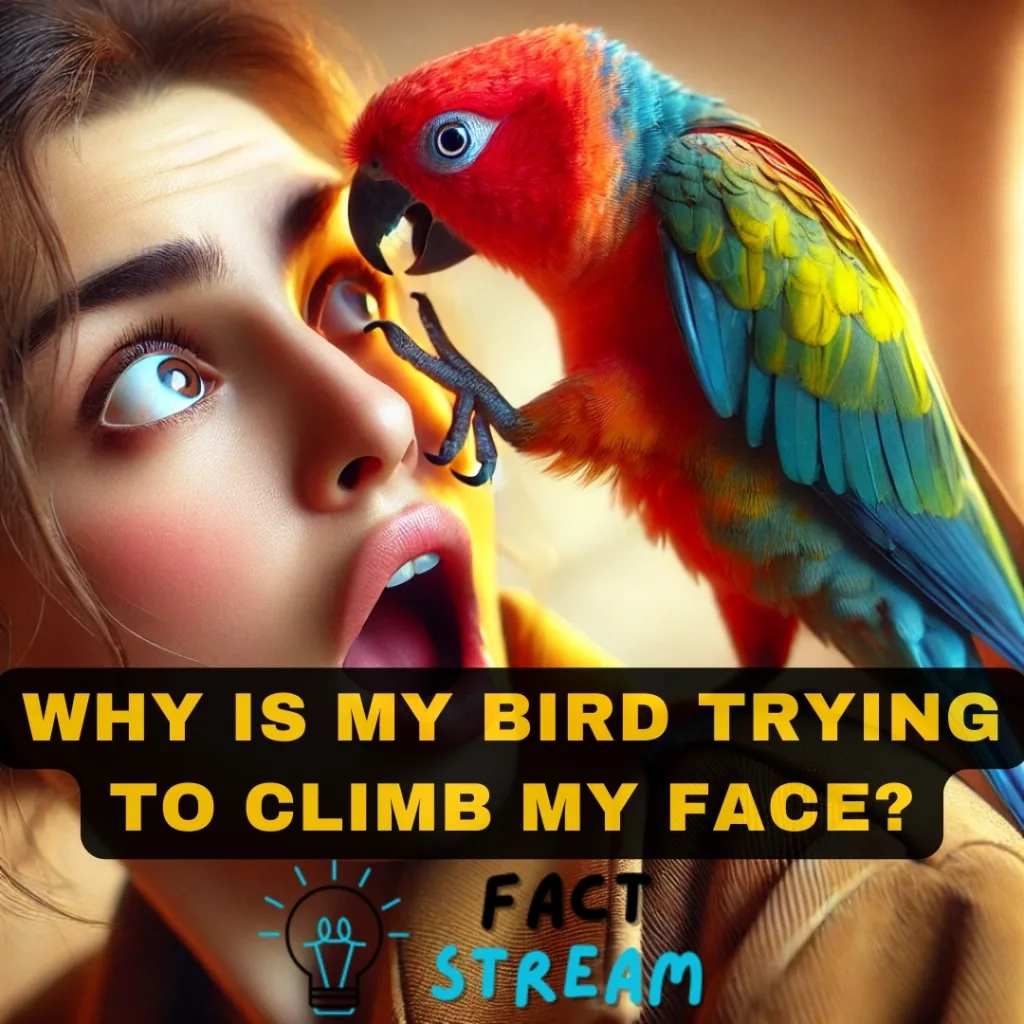Why is My Bird Trying to Climb My Face?
So, your feathered friend has taken to scaling your face like it’s Mount Everest? You’re probably wondering, “Why is my bird trying to climb my face?” This behavior, while sometimes endearing, can be puzzling (and occasionally a little painful!). Don’t worry, it’s a common occurrence, and understanding why your bird is doing this can help you redirect their adventurous spirit and strengthen your bond.
Reasons Why Your Bird Wants to Climb Your Face
Bird behavior can seem mysterious, but it’s all about communication. Here are a few common reasons your bird might be trying to climb your face, drawing on insights from bird behavior experts:
- Affection and Bonding: Birds are incredibly social animals. They see you as part of their flock and want to be close. Face climbing is their way of getting up close and personal, kind of like a feathery hug! They might also try to preen your hair, eyelashes, or eyebrows as a sign of affection.
- Attention-Seeking: Birds, especially parrots and cockatoos, thrive on interaction. If they’re feeling a little neglected or want some playtime, climbing your face is a surefire way to get your attention (and maybe a head scratch too!).
- Curiosity: Birds are curious explorers. They use their beaks and claws to investigate their surroundings. Your face, with all its interesting nooks and crannies, might be just too tempting to resist! This is especially true if you’re wearing glasses – those can be a real attraction for a budgie!
- Excitement: Just like a puppy wagging its tail, birds can express excitement through physical actions. When they’re happy and playful, they might climb your face as part of the fun, especially during interactive playtime.
- Comfort Seeking: Sometimes, birds climb on their owners to feel safe and secure, especially during times of stress or environmental changes. This can be particularly true for African Grey parrots, known for their intelligence and sensitivity.
Recognizing the Cues: When Face Climbing Is Most Likely
Birds often give subtle hints about their intentions. Pay attention to the context and your bird’s body language to better understand their motivations:
- During Playtime: If your bird is extra playful and energetic, they might be more inclined to climb your face as part of the fun.
- When You’re Busy: If your bird is trying to climb your face while you’re on the phone or working, it might be a sign they’re feeling a little ignored and craving attention.
- After Changes: Keep a closer eye on your bird’s behavior after a move, the introduction of a new pet, or any other significant change in their routine. They might be feeling a bit insecure and seek comfort by getting close to you.
Redirecting the Climb: Tips for Managing the Behavior
It’s essential to address unwanted face-climbing, especially if it involves biting or scratching. Here are some tried-and-true methods to help guide your bird towards more appropriate interactions:
1. Training Alternative Behaviors
- Reward Good Behavior: When your bird chooses to sit on your hand or shoulder, offer a small treat or verbal praise, like “Good bird!”. This positive reinforcement helps them learn that these behaviors are more rewarding than face climbing.
- Teach Commands: Start with simple commands like “step up” to encourage your bird to move from your face to your hand. With patience and repetition, they’ll learn to associate the command with the desired action.
2. Provide Engaging Toys
Boredom can lead to all sorts of mischief, including face climbing. Keep your bird entertained and mentally stimulated with a variety of toys:
- Puzzle Toys: Challenge your bird with puzzles that hide treats or require problem-solving to access a reward.
- Foraging Toys: Mimic their natural foraging behaviors by offering toys that require them to work for their treats.
- Chew Toys: Provide safe, chewable toys made from wood or other bird-safe materials to satisfy their natural urge to gnaw.
3. Create a Calm Environment
Stress can amplify unwanted behaviors. Make sure your bird’s environment is as peaceful and predictable as possible:
- Minimize Loud Noises: Sudden, loud noises can startle birds. Try to keep their living space relatively quiet and free from startling sounds.
- Establish a Routine: Birds thrive on routine. Try to keep their feeding, playtime, and sleep schedules consistent to help them feel safe and secure.
4. Be Patient and Consistent
Remember, birds learn through repetition and positive reinforcement. Be patient and consistent with your training. With time and effort, you can help your bird understand the boundaries and enjoy a closer, safer relationship with you.
Remember, It’s All About Communication
By understanding your bird’s unique personality and needs, you can better interpret their behavior and address any issues that arise. Face climbing is often simply a way for your bird to connect with you, but with a little gentle guidance, you can help them find more appropriate ways to express their affection and explore their world.


